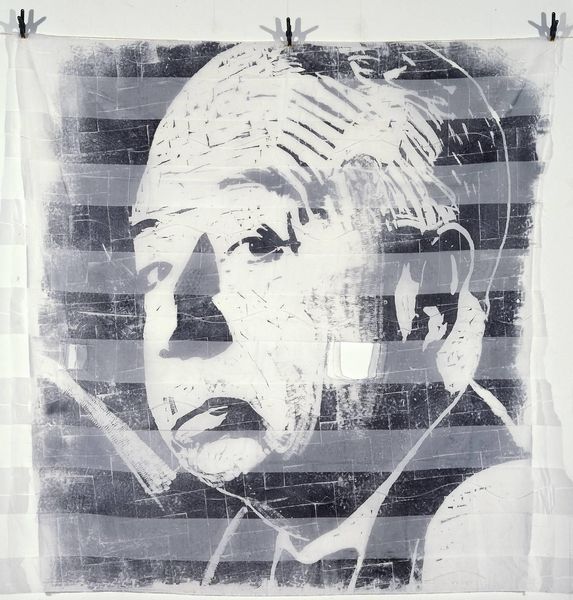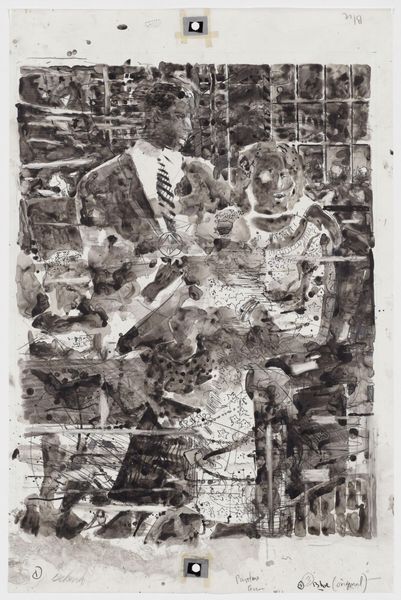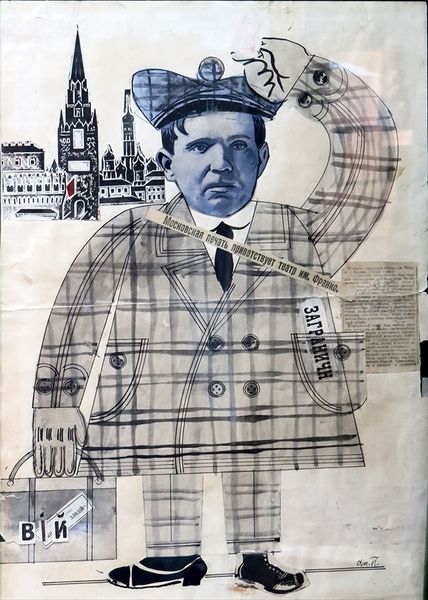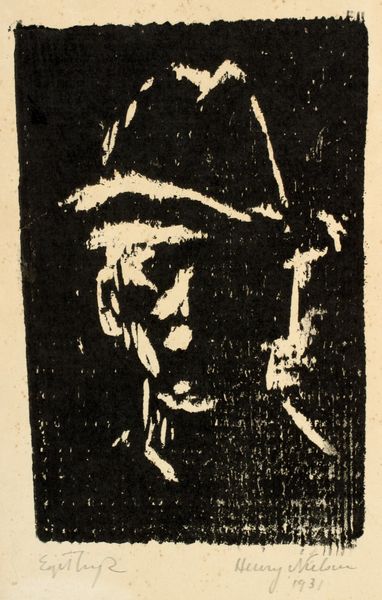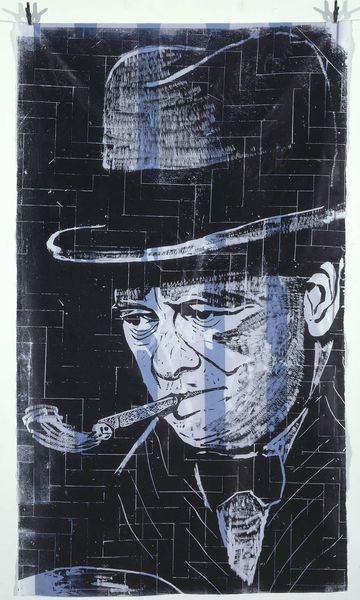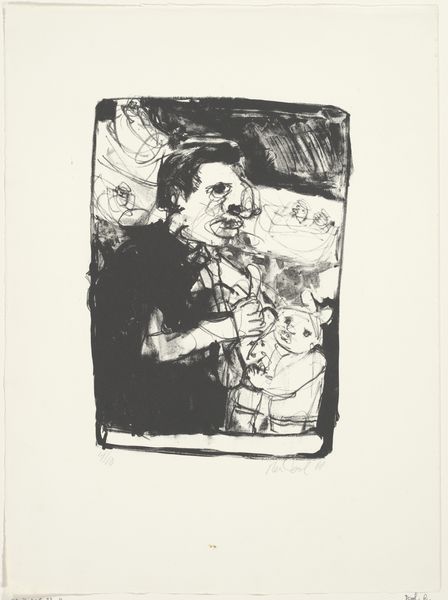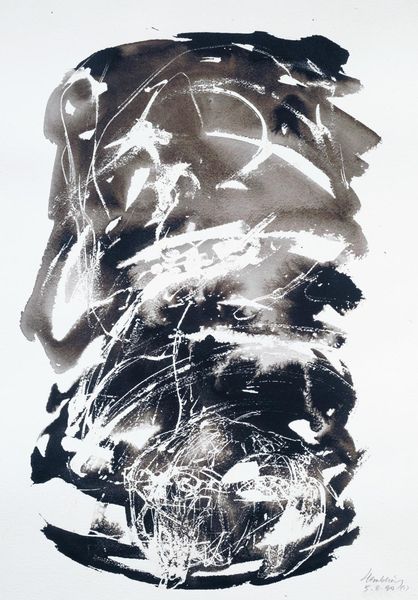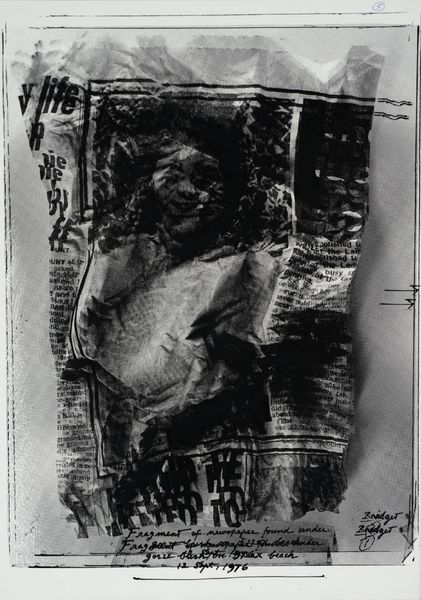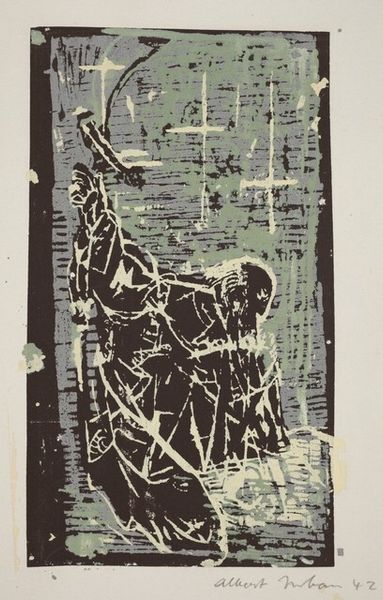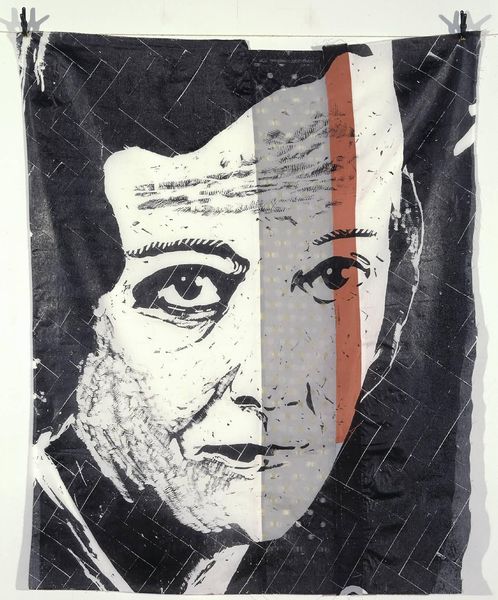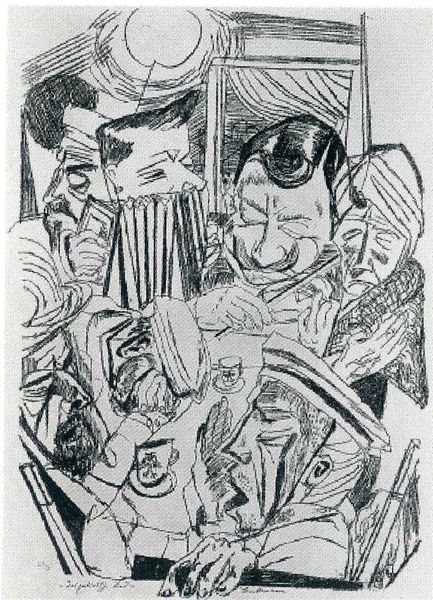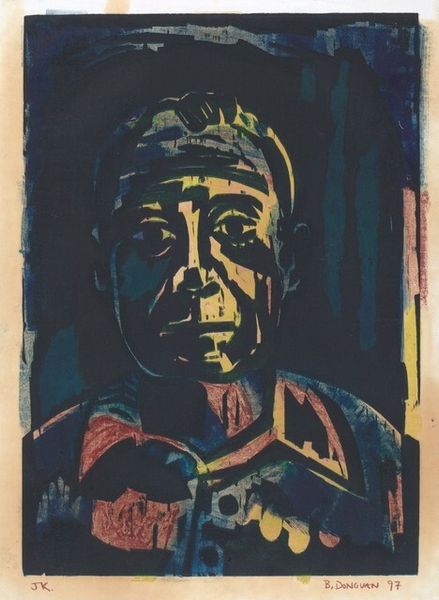
Copyright: © Thomas Kilpper | CC-BY-NC-ND 4.0 DEED, Photo: Tate
Editor: Thomas Kilpper's "The Ring: Robert Atkins" has such a stark quality with its black and white rendering. It reminds me of political cartoons, but with a serious undertone. What symbolism do you see embedded within this piece? Curator: The figure holding the donkey’s head connects to layers of symbolic meaning. Historically, the donkey symbolizes stubbornness or foolishness. What could it mean when juxtaposed against a portrait? Editor: Perhaps it questions the figure's authority or wisdom? Is Kilpper suggesting a critical commentary on power? Curator: Exactly! The image triggers cultural memories associated with the donkey as a symbol of resistance, and invites us to decode the psychological weight within this visual commentary. Editor: I see now, symbols operating on multiple levels to create deeper understanding. Curator: Precisely, visual symbols offer continuity to cultural memory.
Comments
tate 7 months ago
⋮
http://www.tate.org.uk/art/artworks/kilpper-the-ring-robert-atkins-p78556
Join the conversation
Join millions of artists and users on Artera today and experience the ultimate creative platform.
tate 7 months ago
⋮
This is one of a series of unique prints generated from a site-specific work created in an office block on Blackfriars Road, in the London borough of Southwark. Orbit House was abandoned and scheduled for demolition when Kilpper gained access to the building in 1999. He carved a giant woodcut into the mahogany parquet covering the tenth floor, comprising an area of approximately 400 square metres. The woodcut depicted a boxing ring surrounded by an audience of some eighty characters whose names were cut around the edge of the image. The artist derived the portraits from photographs and etchings which he made into slides and projected onto the floor before carving the relief with chisels and a chainsaw. He then made a succession of prints, constituting individual portraits, on a range of new and found materials. He used old curtains left in the building, often sewing several pieces together to make one large, rectangular support. Paper sources include advertising hoarding paper and sheets of purple ultra violet polythene film which Kilpper discovered screening windows in some rooms of the building. The herringbone texture of the parquet features strongly on all the uncut areas of the prints which were executed mainly in black ink using a specially-made giant, cement-filled roller. During the exhibition of the work, the prints were suspended on washing lines above the carved floor. Daylight from the surrounding windows filtered through their semi-translucent supports. Visitors would walk on the carved parquet while looking at the prints. A huge banner was printed from the entire surface (The Ring, collection the artist) and hung on the outside of the building for the duration of the installation. Tate owns twenty-one prints, twenty made on fabric (Tate P78537-P78556) and one on paper (Tate P78557). The Ring: Fight On (Tate T07671) is a section of the parquet flooring preserved before the building’s demolition in late 2000.
